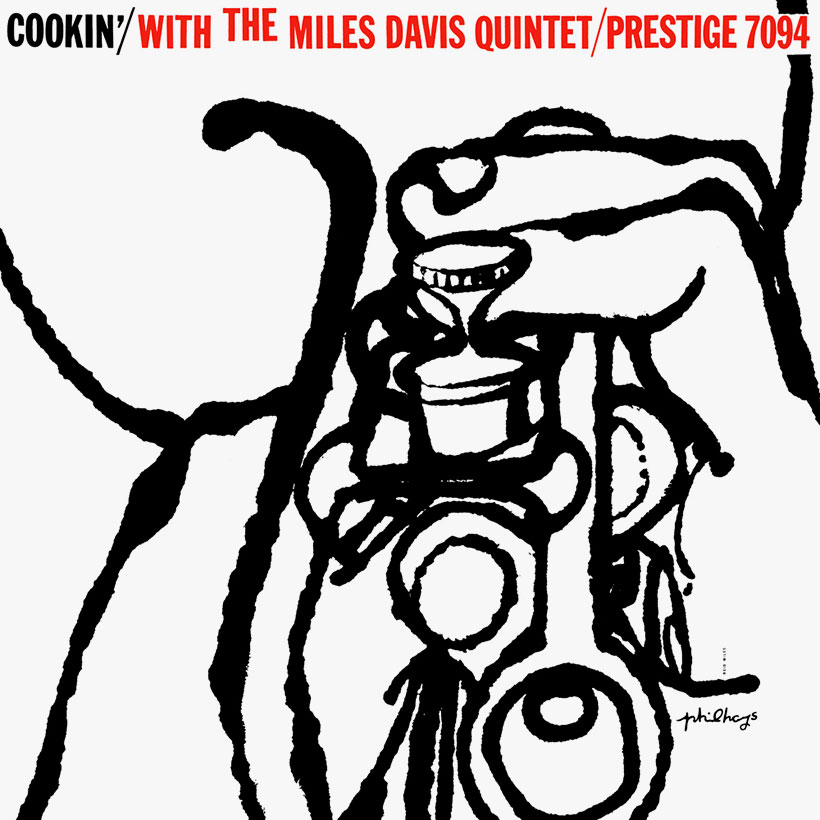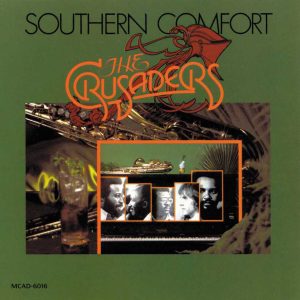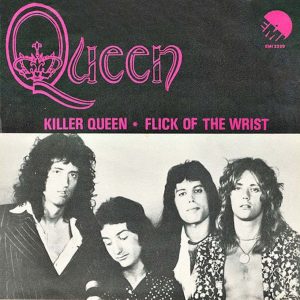The Miles Davis Quintet was big news in the jazz world during the late 50s. A groundbreaking and progressive group, it was crucial in establishing the post-bebop language of modern jazz and also adapted to – and took advantage of – the longer playing time that the 12” 33 1/3rpm record brought with it. Miles had already been noted as a trailblazer, but now, thanks to a stable working group consisting of saxophonist John Coltrane, pianist Red Garland, bassist Paul Chambers, and drummer Philly Joe Jones – with whom he recorded a number of classic albums on the Prestige label, among them Walkin’, Cookin’, Relaxin’, Workin’ and Steamin’ With The Miles Davis Quintet – he was on his way to becoming a bona fide jazz superstar.
Listen to Cookin’ With The Miles Davis Quintet on Apple Music and Spotify.
A marathon recording session
The quintet came into existence at a time when Miles’ stock had risen considerably after a memorable appearance at the 1955 Newport Jazz Festival that resulted in Columbia Records trying to sign him. There was just one problem: Miles was already under contract to Bob Weinstock’s indie company, Prestige, where he’d been recording since 1951. A compromise was reached between Columbia and Prestige that allowed Miles to join the major label in exchange for supplying Weinstock with five albums’ worth of new material.
Released in July 1957, Cookin’ With The Miles Davis Quintet followed in the wake of Miles: The New Miles Davis Quintet, the very first release by the trumpeter’s new band. It was sourced from a marathon recording session at Rudy Van Gelder’s Hackensack studio in New Jersey, on October 26, 1956, that also provided some material for the subsequent Prestige albums Steamin’, Workin’ and Relaxin’, a themed sequence of albums dubbed by jazz critic Ira Gitler as “The Famous Four.”
At his bittersweet best
Cookin’ begins in a downbeat mood with a mellow version of the Rodgers & Hart-penned ballad “My Funny Valentine.” The song was written in 1937 for the Broadway musical Babes In Arms and became a hit for American bandleader Hal McIntyre. It quickly became regarded as a jazz standard and has been recorded by everyone from Frank Sinatra to Sarah Vaughan. Miles Davis’ indelible version begins with Red Garland’s sparkling piano before we hear a desolate muted trumpet that seems to personify sadness and vulnerability. It’s Miles at his brittle bittersweet best. The groove picks up and begins to swing, and Garland shines with a decorative solo before the song winds down with a lovely Miles cadenza.
Though Coltrane sits out “My Funny Valentine,” he makes up for it on “Blues By Five,” an original Red Garland tune that, after a false start, motors along at a good tempo. Chambers walks his bass in sync with Jones’ drums; their swinging groove is light and airy enough to let Miles’ horn float on top. Then comes Trane’s solo: robust, virile, and vigorously athletic. His penchant for playing long flowing lines contrasts markedly with Miles’ minimalistic trumpet. So, too, does Red Garland’s crystalline piano filigrees.
The Sonny Rollins-composed “Airegin” is more urgent and proceeds at a faster pace. Miles had recorded the tune before, alongside its composer, on the 1954 Prestige album Miles Davis With Sonny Rollins. Coltrane is quickest out of the blocks, playing a short solo right at the start before his horn interlocks with Miles’ to enunciate the main theme. Miles solos first, followed by Coltrane, who blows a gushing torrent of notes, and then the always elegant Garland.
A musical master chef
Cookin’ concludes with a medley comprising a Davis original, “Tune Up” (a song he had previously recorded on the Prestige album Blue Haze in 1954), and the standard “When Lights Are Low.” The former is a fast-paced swinger that also allows the energetic Philly Joe Jones to dazzle on some short but effective solo passages; it segues into the more mellow “When Lights Are Low,” which still swings in a propulsive manner thanks to Chambers’ strong bass line.
Miles Davis proved that he was a consummate musical master chef on Cookin’. Blessed with simpatico sidemen, he had instinctively found the right sonic ingredients and blended them to perfection. The end result was an album to savor. Not only did it further enhance the trumpeter’s steadily-growing reputation, but it also confirmed that his quintet was arguably the most exciting group in modern jazz during the late 50s.




